Boy, 10, struck by lightning at Warrilla Beach at Barrack Point near Shellharbour: Australia Day
>
A boy was rushed to hospital after being struck by lightning on a Wollongong beach.
The 10-year-old boy was swimming on Australia Day at Warrilla Beach at Barrack Point near Shellharbour in NSW, when he was struck by lightning.
Emergency crews arrived at the scene around 5:25 p.m. and treated him for burns to his chest.
He was then taken to Westmead Children’s Hospital by ambulance where he remains stable.
Temperatures in the area reached 30 degrees Thursday before a cloud front moved in.
A child has been rushed to hospital after being struck by lightning on a Wollongong beach.
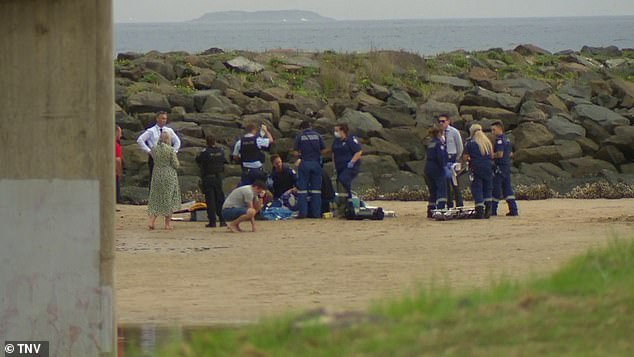
The 10-year-old boy was swimming on Australia Day at Warrilla Beach at Barrack Point near Shellharbour in New South Wales when he was struck by lightning.
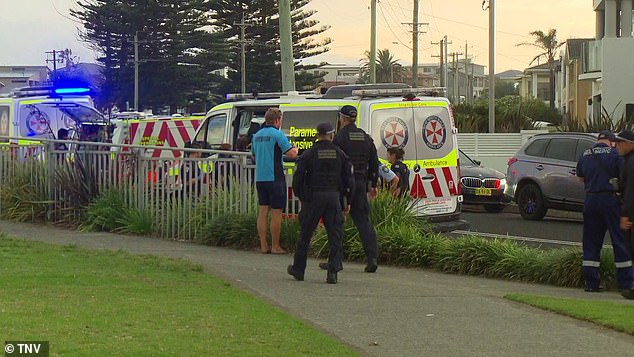
Emergency crews rushed to the scene around 5:25 p.m. and treated him for burns to his chest.
The terror incident is presented as a The ‘nasty’ forecast storm rolled across western New South Wales on the bank holiday after the mercury hit 33C and much of the country’s east coast was sweltering.
The Met Office issued a detailed thunderstorm warning for three ‘severe’ storm cells on Thursday afternoon, moving east from the Blue Mountains towards Hawkesbury, Parramatta, Erskine Park and Liverpool.
They were accompanied by a warning from the State Emergency Service for residents to move their car under cover, unplug computers and appliances, avoid using the phone and stay away from windows.
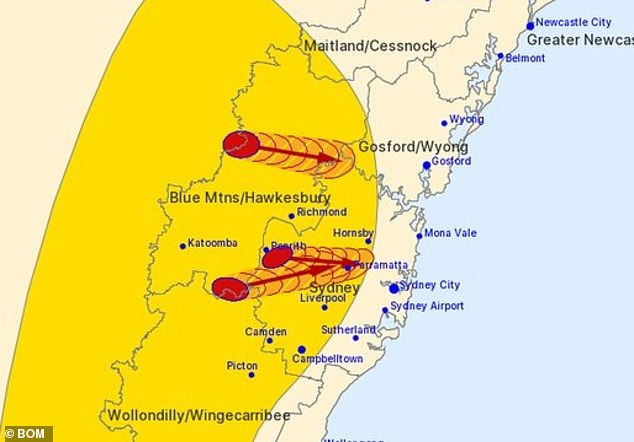
The Bureau of Meteorology issued this severe storm warning Thursday afternoon.
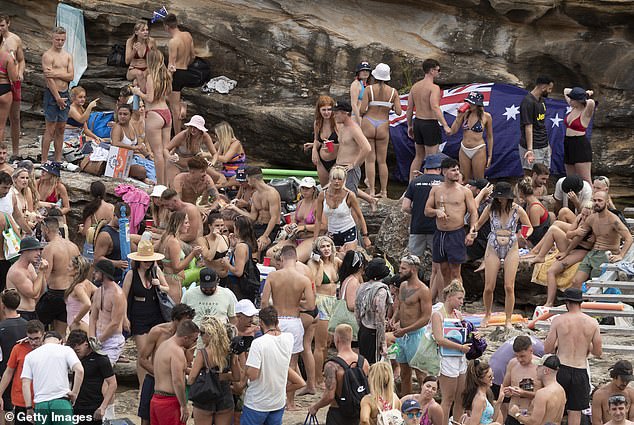
Showers and possible thunderstorms could spoil the second half of the Australia Day celebrations as storms move up the East Coast (Australia Day celebrations pictured)
The BOM had forecast Australia Day barbecues to be disrupted by mid-afternoon storms as a low pressure system moves up the east coast from Bass Strait, with showers expected in the Illawarra area.
A weather warning has also been issued for inland Queensland with severe thunderstorms and damaging winds for Thursday afternoon.
Severe thunderstorms are likely to produce damaging winds in the warning area over the next several hours and are expected to last into the evening.
Locations that may be affected include Cunnamulla, Quilpie, Mt Howitt Station, Bollon, Surat and Wyandra.
Scattered showers are expected in inland Queensland as another low pressure system moves from Broken Hill in New South Wales towards the sunshine state.
More supercells are expected to form in northern New South Wales and southern Queensland on Friday afternoon, bringing heavy rain to areas including Port Macquarie, the Gold Coast and inland Queensland.
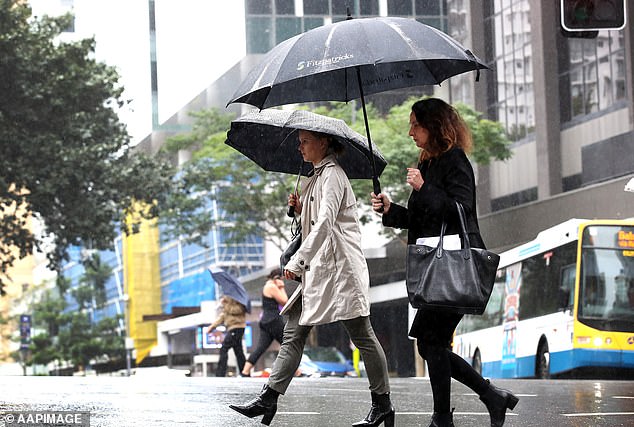
Heavy rain and thunderstorms are expected over NSW and Queensland this weekend, with Queensland could see heavier rain next week (pedestrians in Brisbane pictured)
Wet weather is expected to persist through the weekend as chances of thunderstorms persist along the East Coast.
The BOM has acknowledged a “risk of isolated severe thunderstorms over the interior of the southeast [Queensland]’.
Severe weather conditions are expected to increase on Sunday into Monday as most of the Northern Territory, Queensland and northern New South Wales will experience heavy rain and possible thunderstorms.
Queensland can expect heavier rain late next week as more low pressure systems dump rain across the state.
Tropical Cyclone Freddy is likely to develop over western Australia on Saturday, bringing damaging wind gusts and significant rainfall totals.
If the cyclone develops, it could bring gusts of up to 125km/h and heavy rainfall with up to 300mm forecast over 35 hours.
However, Perth is expected to avoid the brunt of the storm with mostly sunny weather forecast through the weekend.
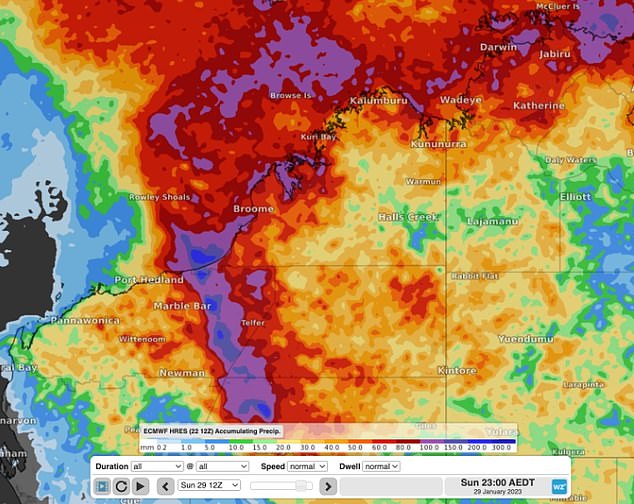
Cyclone Freddy (above) could form off the WA coast with wind gusts of up to 125 km/h and heavy rainfall
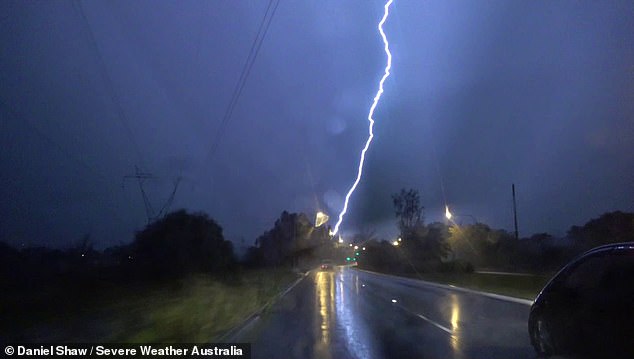
Sydney recently experienced heavy rain and thunderstorms on Tuesday night (pictured) as Camden Airport recorded over 20,000 lightning strikes and 20mm of rain in 10 minutes
The weather will remain good in South Australia for most of the week before a cool change brings significant rain for the weekend.
Temperatures will stay below 30C before Friday, when sweltering heat will grip Adelaide.
The mercury could reach 37C before the weekend.
Greater Sydney experienced heavy rain and thunderstorms from Tuesday night into Wednesday morning, with thousands of lightning strikes across areas of Sydney as heavy rain caused flash flooding.
Camden Airport, on the southwestern tip of Sydney, experienced more than 20,000 lightning strikes within a radius of just 20 kilometers and recorded 20 millimeters of rain in just 10 minutes.
Meanwhile, flash flooding and power outages hit Victoria on Tuesday afternoon after severe thunderstorms developed.
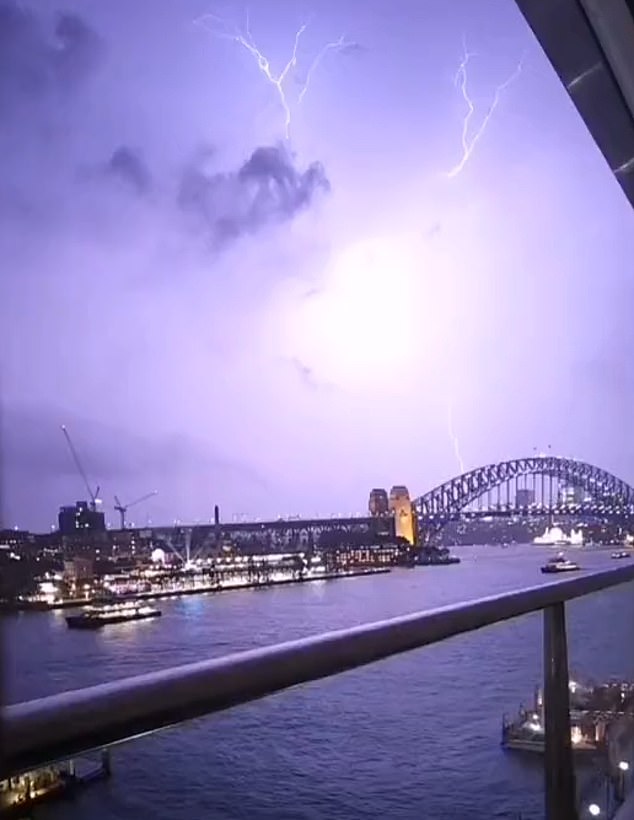
Thunderstorms hit Sydney (above) starting at 9:00pm on Tuesday and more rain is forecast to fall on the city on Wednesday and Friday
State emergency services responded to hundreds of calls for help, with 116 requests in Geelong alone.
In the 90 minutes to 3:30pm, at least 24mm of rain fell on Geelong Racecourse and more than 3,000 homes were without power when lightning struck the area.
Melbourne was also severely affected, with more than 6,000 Victorians without power.
The storms hit the Bellarine Peninsula around 2:15 p.m. Tuesday, bringing high winds and heavy downpours that had already drenched the western part of the state.
Mount Glibrant, some 67 kilometers west of Geelong, received 29mm of rain in 30 minutes.
As the thunderstorms passed to the east, Melbourne was hit by the deluge around 5pm
Parts of the city were affected by heavy rain and damaging winds, while locals reported strong lightning throughout the afternoon.
